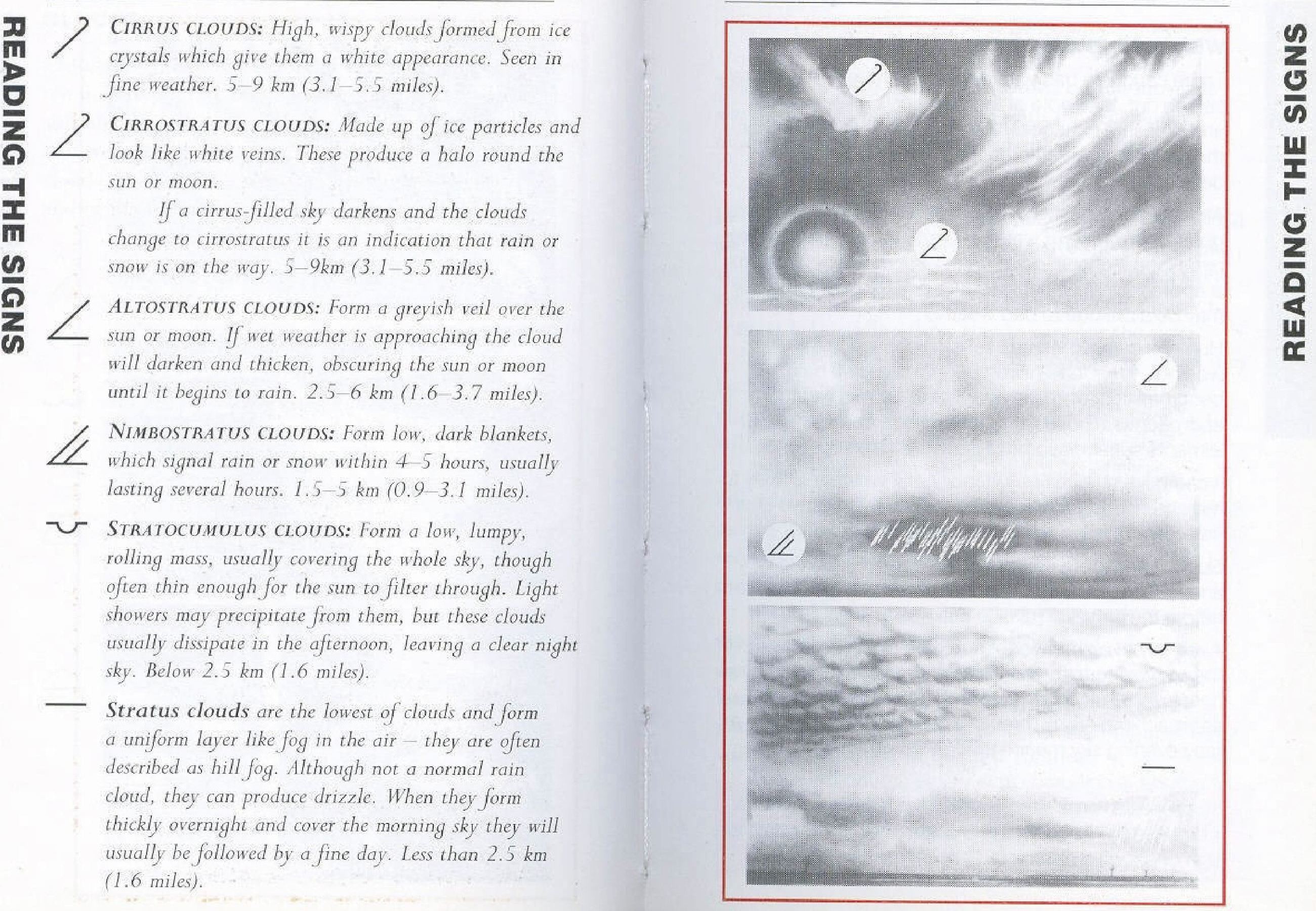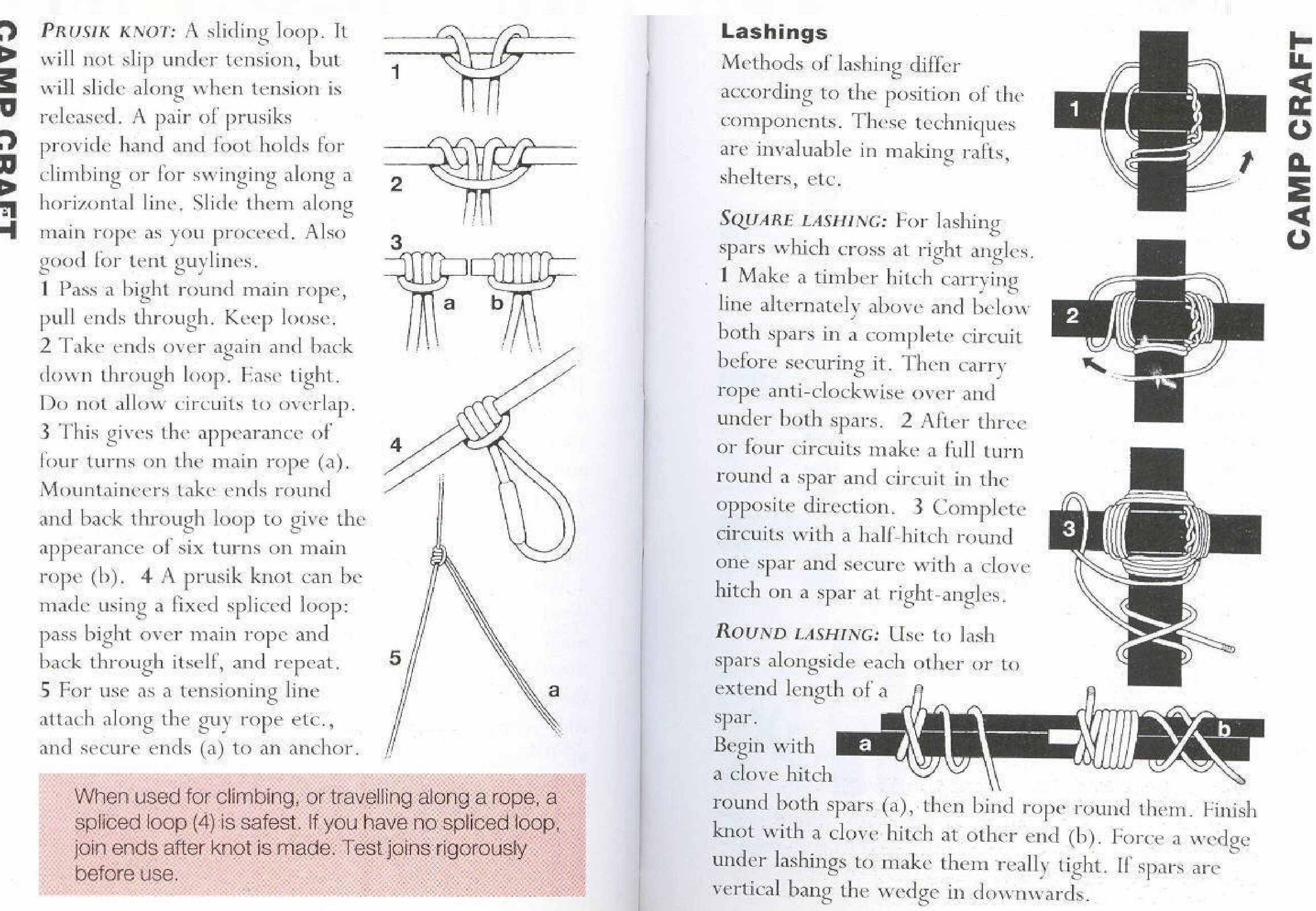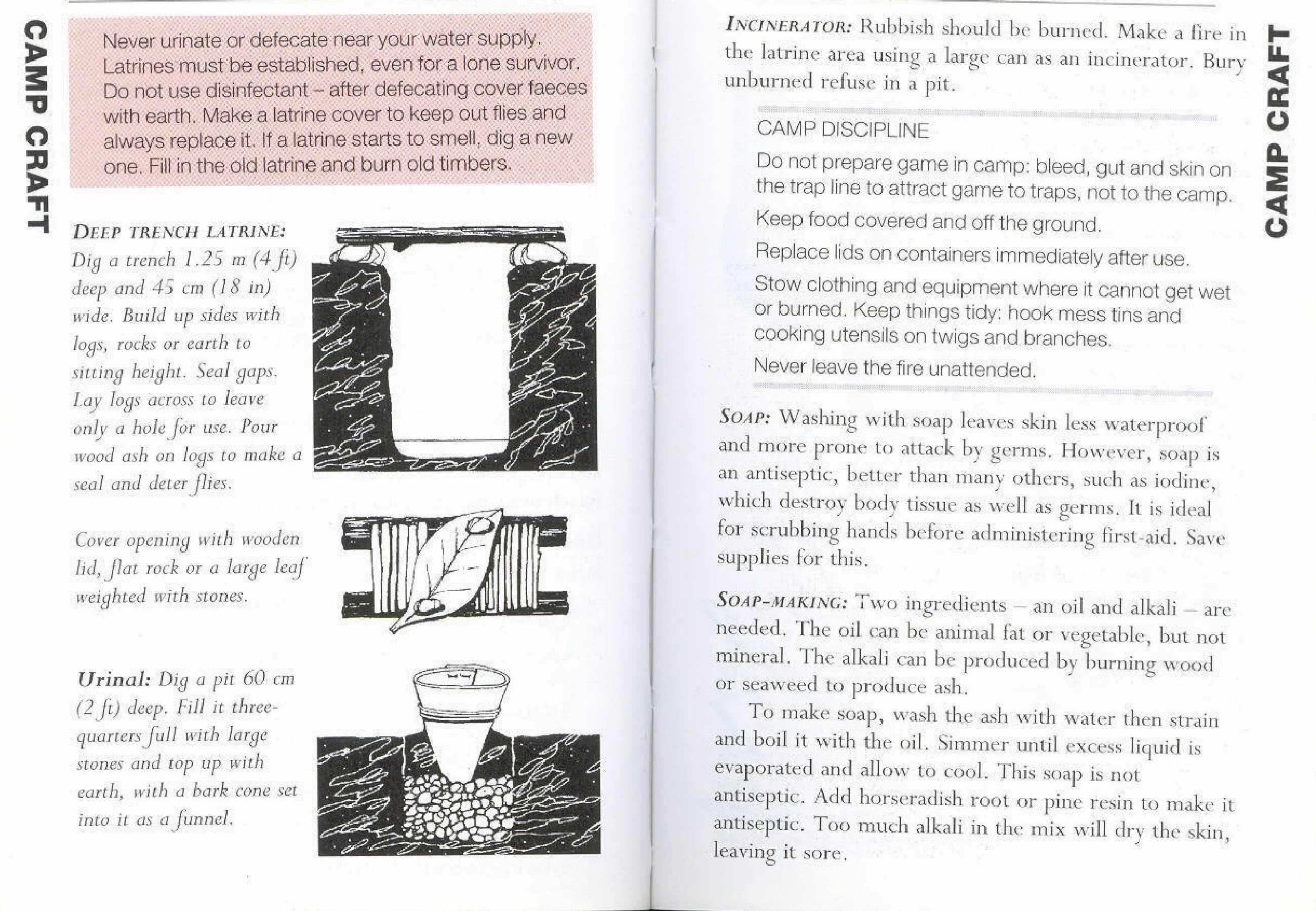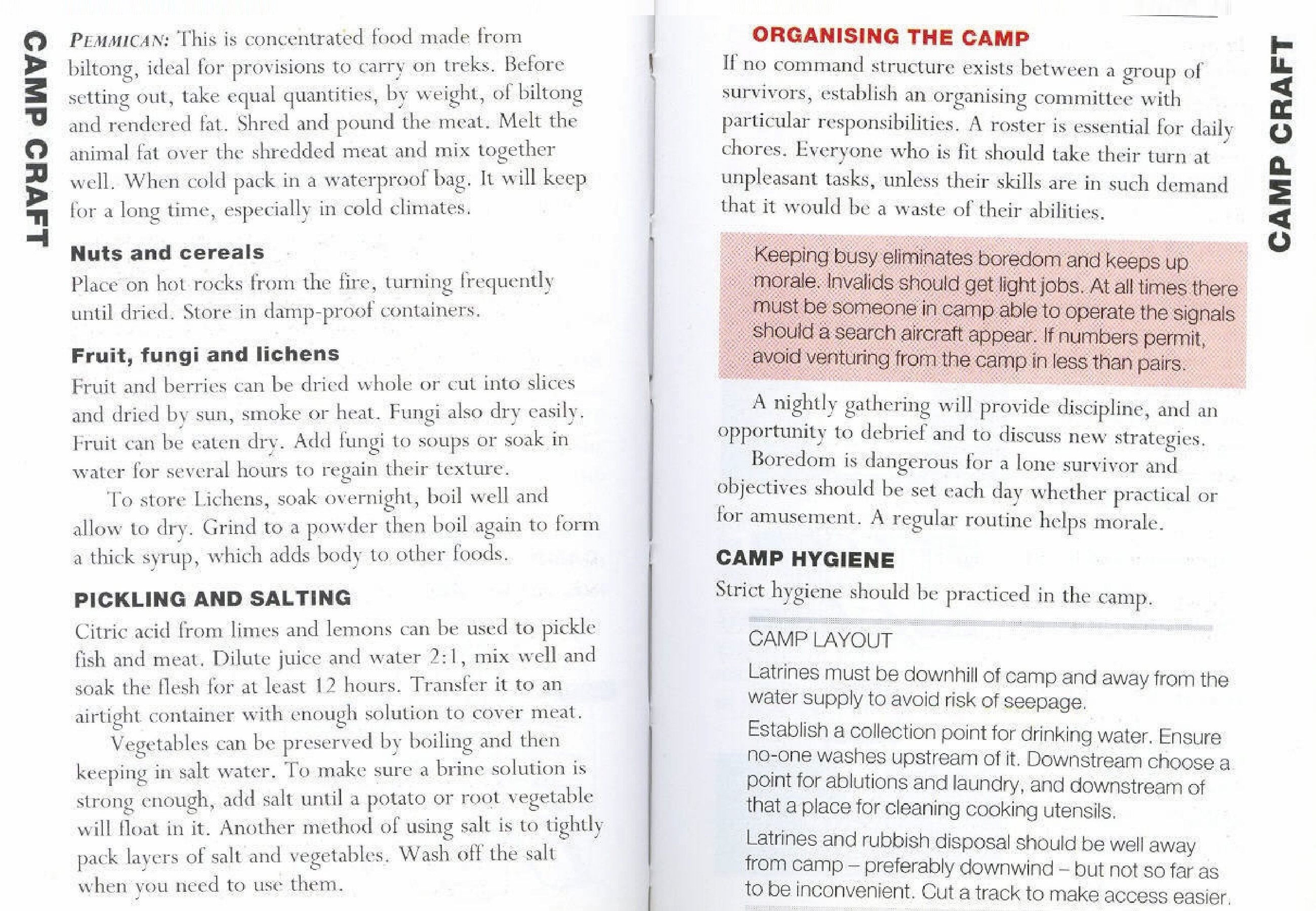Upload Your Infographic
 InfoHow.org
InfoHow.org
Categories
- Advice
- Animals
- Architecture
- Arts
- Banking
- Bitcoin & Blockchain
- Business, Finance & Employment
- Companies
- Countries, Maps & Geography
- Education
- Electronics & Technology
- Entertainment
- Fashion, Clothing & Grooming
- Food & Drink
- Holidays
- How To
- Internet & Communication
- Law & Crime
- Popular Culture & Social Media
- Science
- Social Science
- Society, Culture & Relationships
- Sports & Health
- Statistics
- Survival DIY
- War, Weapons & Military
Survival DIY Archive
SAS 124 – Sea Survival
Survival Afloat: Rafts, boats and dinghies are built to carry a limited number. These numbers should not be exceeded. Place infants and the infirm aboard, and as many able-boclied as […]
SAS 123 – Sea Survival
Swim slowly and steadily. If abandoning a sinking boat or aircraft get upwind and stay clear of it. Keep away from any fuel slick. If forced to swim through flames, […]
SAS 122 – Sea Survival & Abandoning Ships
Survival at Sea: Four-Fifths of the Earth’s surface is open water – the most difficult environment in which to survive. Water and wind rapidly chill the body. Alone in cold […]
SAS 121 – Moving on Water
Crossing with Ropes: You need a loop of rope three times as long as the width of the stream and at least three people in the party- the fittest person […]
SAS 120 – Moving on Waterways
Moving on the waterways needs to be done very carefully. A large group will need several rafts. The first should carry no equipment or provisions, just the fittest group members […]
SAS 118 – Moving
Negotiating territory at night can be dangerous, but may be necessary. Because it is difficult to see clearly you are easily disorientated. It is always darker among trees, so keep […]
SAS 116 – Moving
To make a sledge that is ideal for snow and ice, use doors and cowlings from a crashed vehicle or plane in construction. Tie lines to front runners with a […]
SAS 115 – Reading Weather & Deciding to Move
To be caught in bad weather could prove fatal. Before setting out, take note of the weather. Observe wind and pressure changes. Keep a record of the weather, the conditions […]
SAS 114 – Reading Weather with Clouds
There are different types of clouds that needs to be read to read the signs. They are Cirrus Clouds, Cirrostratus clouds, Altostratus clouds, Nimbostratus clouds, Stratocumulus clouds, Stratus clouds.
SAS 113 – Reading Weather with Clouds
Clouds are the most reliable of weather signs. There are ten main types of cloud formation. Approximate altitudes are given for each type. THe same shapes occur at lower altitutudes […]
SAS 112 – Direction Finding & Weather
Weather is much more localised than climate and there can be marked variations between one small area and the next. A regular pattern of day-night change in wind direction suggests […]
SAS 110 – Direction Finding
Plants can give an indication of north and south. They tend to grow towards the sun, so flowers and most abundant growth will be to the south in the northern […]
SAS 109 – Direction Finding
Direction by Watch: a traditional analogue watch with two hands can tell direction, provided it is set to true local time. The nearer the Equator you are, the less accurate […]
SAS 108 – Map Reading & Direction Finding
Direction Finding: The sun rises the eas and sets in the west, roughly speaking. In the northern hemisphere, at noon, the sun will be due south; in the southern hemisphere […]
SAS 105 – Knots
There techniques for lashing differ consistent with the position of the segments. THese strategies are significant in making flatboats, safe houses and so on.
SAS 102 – Knots
Tie the same number stepping stools as manharness hitches in a rope as you need hand and toeholds. An arrangement of overhand hitches tied at interims in a smooth rope […]
SAS 101 – Knots
Triple Bowline: A bowline made with a twofold line. Structure a circle, pass copied exist close through circle, betraying standing part and trust through circle. This produces 3 circles which […]
SAS 100 – Knots
Fisherman’s knot is the perfect hitch for uniting springy vines, wires, dangerous lines and gut throwing a baited hook out there line. Particularly secure but difficult to untie. Not prescribed […]
SAS 099 – Knots
Simple Knots: These ties are briskly made and will help you perceive the more convoluted ties that accompany. Overhead Knot: Make a circle and pass the live close over through […]
SAS 097 – Clothing & Ropes
Taking care of Rope: Rope should be protected from exposure to damp or storing sunlight and if made from natural fibres, from attack by rodents and insects. If it does […]
SAS 095 – Camp Tools & Beds
Beds: Avoid lying on cold, damp ground. In the tropics raise the bed to provide a current of air. In cold climates, Keep a fire going through the night and […]
SAS 092 – Organising Camp
Camp Discipline: Do not plan amusement in camp: drain, gut and skin on the trap line to pull in event to traps, not to the camp.
SAS 091 – Preserving Food & Organising Camp
Assuming that no charge structure exists between an aggregation of survivors, build an organising board with specific obligations. A program is crucial for every day tasks.
SAS 090 – Preserving Food
If food is not plentiful or is limited by season, ensure that stores keep safely. Do not store food in direct sunlight, near excessive warmth or moisture, nor where scavengers […]

![SAS 124 – Sea Survival Survival Afloat: Rafts, boats and dinghies are built to carry a limited number. These numbers should not be exceeded. Place infants and the infirm aboard, and as many able-boclied as […]](https://www.infohow.org/wp-content/uploads/2012/11/SAS-124-Sea-Survival.jpg)
![SAS 123 – Sea Survival Swim slowly and steadily. If abandoning a sinking boat or aircraft get upwind and stay clear of it. Keep away from any fuel slick. If forced to swim through flames, […]](https://www.infohow.org/wp-content/uploads/2012/11/SAS-123-Sea-Survival.jpg)
![SAS 122 – Sea Survival & Abandoning Ships Survival at Sea: Four-Fifths of the Earth’s surface is open water – the most difficult environment in which to survive. Water and wind rapidly chill the body. Alone in cold […]](https://www.infohow.org/wp-content/uploads/2012/11/SAS-122-Sea-Survival-Abandoning-Ships.jpg)
![SAS 121 – Moving on Water Crossing with Ropes: You need a loop of rope three times as long as the width of the stream and at least three people in the party- the fittest person […]](https://www.infohow.org/wp-content/uploads/2012/11/SAS-121-Moving-on-Water.jpg)
![SAS 120 – Moving on Waterways Moving on the waterways needs to be done very carefully. A large group will need several rafts. The first should carry no equipment or provisions, just the fittest group members […]](https://www.infohow.org/wp-content/uploads/2012/11/SAS-120-Moving-on-Waterways.jpg)
![SAS 118 – Moving Negotiating territory at night can be dangerous, but may be necessary. Because it is difficult to see clearly you are easily disorientated. It is always darker among trees, so keep […]](https://www.infohow.org/wp-content/uploads/2012/11/SAS-118-Moving.jpg)
![SAS 116 – Moving To make a sledge that is ideal for snow and ice, use doors and cowlings from a crashed vehicle or plane in construction. Tie lines to front runners with a […]](https://www.infohow.org/wp-content/uploads/2012/11/SAS-116-Moving.jpg)
![SAS 115 – Reading Weather & Deciding to Move To be caught in bad weather could prove fatal. Before setting out, take note of the weather. Observe wind and pressure changes. Keep a record of the weather, the conditions […]](https://www.infohow.org/wp-content/uploads/2012/11/SAS-115-Reading-Weather-Deciding-to-Move.jpg)

![SAS 113 – Reading Weather with Clouds Clouds are the most reliable of weather signs. There are ten main types of cloud formation. Approximate altitudes are given for each type. THe same shapes occur at lower altitutudes […]](https://www.infohow.org/wp-content/uploads/2012/11/SAS-113-Reading-Weather-with-Clouds.jpg)
![SAS 112 – Direction Finding & Weather Weather is much more localised than climate and there can be marked variations between one small area and the next. A regular pattern of day-night change in wind direction suggests […]](https://www.infohow.org/wp-content/uploads/2012/11/SAS-112-Direction-Finding-Weather.jpg)
![SAS 110 – Direction Finding Plants can give an indication of north and south. They tend to grow towards the sun, so flowers and most abundant growth will be to the south in the northern […]](https://www.infohow.org/wp-content/uploads/2012/11/SAS-110-Direction-Finding.jpg)
![SAS 109 – Direction Finding Direction by Watch: a traditional analogue watch with two hands can tell direction, provided it is set to true local time. The nearer the Equator you are, the less accurate […]](https://www.infohow.org/wp-content/uploads/2012/11/SAS-109-Direction-Finding.jpg)
![SAS 108 – Map Reading & Direction Finding Direction Finding: The sun rises the eas and sets in the west, roughly speaking. In the northern hemisphere, at noon, the sun will be due south; in the southern hemisphere […]](https://www.infohow.org/wp-content/uploads/2012/11/SAS-108-Map-Reading-Direction-Finding.jpg)

![SAS 102 – Knots Tie the same number stepping stools as manharness hitches in a rope as you need hand and toeholds. An arrangement of overhand hitches tied at interims in a smooth rope […]](https://www.infohow.org/wp-content/uploads/2012/11/SAS-102-Knots.jpg)
![SAS 101 – Knots Triple Bowline: A bowline made with a twofold line. Structure a circle, pass copied exist close through circle, betraying standing part and trust through circle. This produces 3 circles which […]](https://www.infohow.org/wp-content/uploads/2012/11/SAS-101-Knots.jpg)
![SAS 100 – Knots Fisherman’s knot is the perfect hitch for uniting springy vines, wires, dangerous lines and gut throwing a baited hook out there line. Particularly secure but difficult to untie. Not prescribed […]](https://www.infohow.org/wp-content/uploads/2012/11/SAS-100-Knots.jpg)
![SAS 099 – Knots Simple Knots: These ties are briskly made and will help you perceive the more convoluted ties that accompany. Overhead Knot: Make a circle and pass the live close over through […]](https://www.infohow.org/wp-content/uploads/2012/11/SAS-099-Knots.jpg)
![SAS 097 – Clothing & Ropes Taking care of Rope: Rope should be protected from exposure to damp or storing sunlight and if made from natural fibres, from attack by rodents and insects. If it does […]](https://www.infohow.org/wp-content/uploads/2012/11/SAS-097-Clothing-Ropes.jpg)
![SAS 095 – Camp Tools & Beds Beds: Avoid lying on cold, damp ground. In the tropics raise the bed to provide a current of air. In cold climates, Keep a fire going through the night and […]](https://www.infohow.org/wp-content/uploads/2012/11/SAS-095-Camp-Tools-Beds.jpg)


![SAS 090 – Preserving Food If food is not plentiful or is limited by season, ensure that stores keep safely. Do not store food in direct sunlight, near excessive warmth or moisture, nor where scavengers […]](https://www.infohow.org/wp-content/uploads/2012/11/SAS-090-Preserving-Food.jpg)
 Upload your infographic here and contribute to our community.
Upload your infographic here and contribute to our community.